La Pedrera
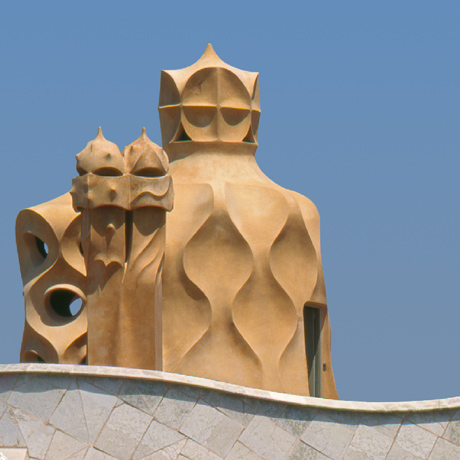
The success achieved by Antoni Gaudí with the two residential buildings which he had built in Barcelona’s Eixample district at the start of the 20th century brought him another commission from a new client, Pere Milà, a wealthy bourgeois from a prosperous Barcelona family who had married Roser Segimon , a rich young widow from Reus. One year after marrying, Milà commissioned Gaudí to build an apartment building at Passeig de Gràcia, keeping the principal or main floor as the residence of his family and renting out the rest. This avenue was the main thoroughfare of the new Barcelona and it had become the most prestigious social setting of a city that was just then undergoing an unprecedented development boom.
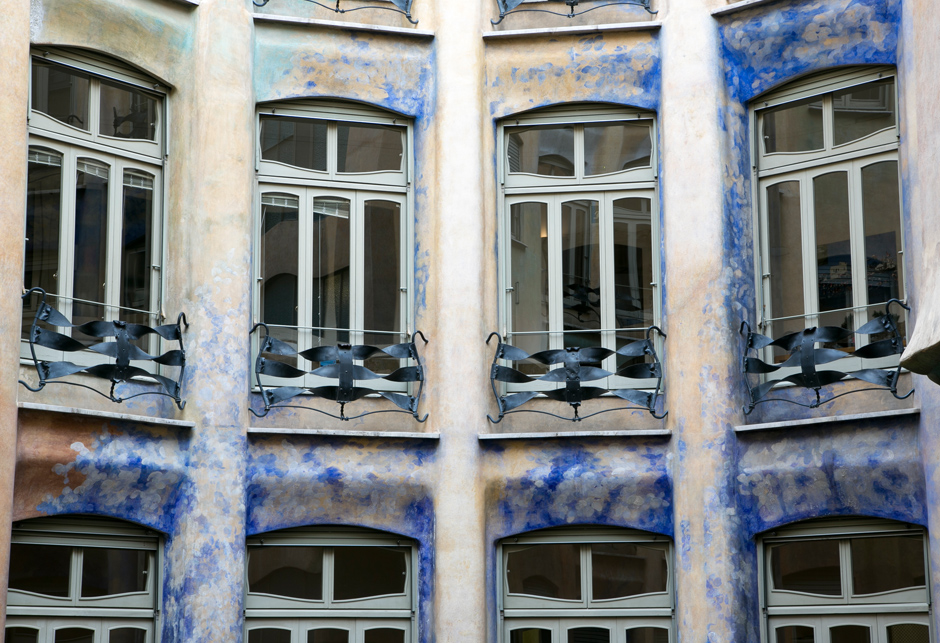
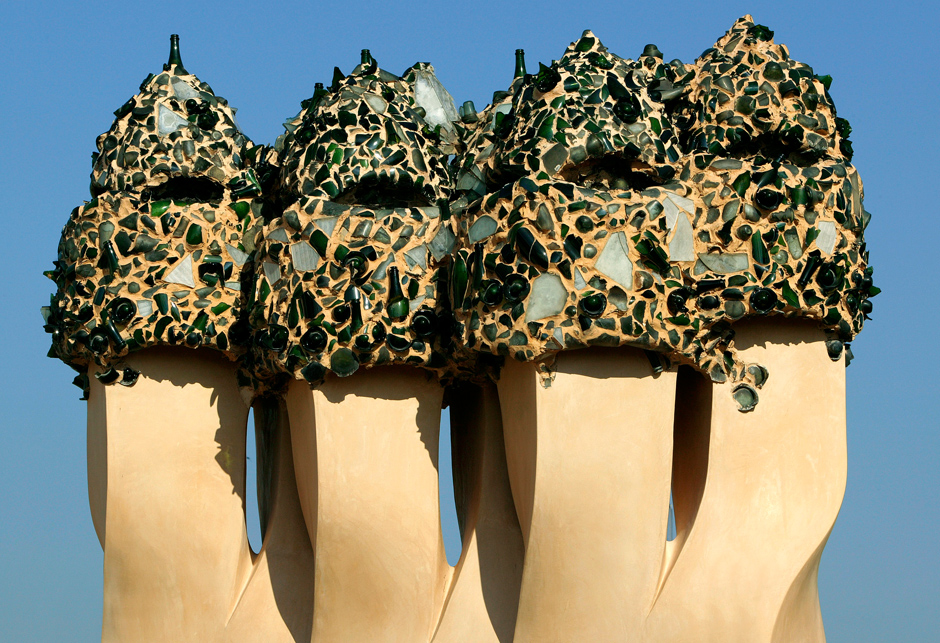
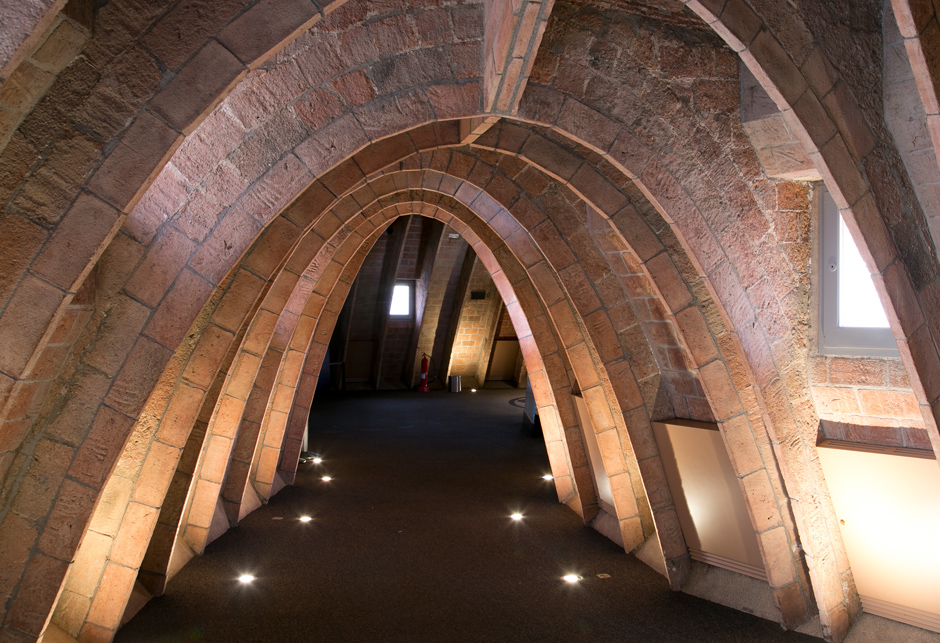
A HOME FOR THE MILÀ-SEGIMON COUPLE
Gaudí based his concept on the client’s wishes and designed a building that is unique in all respects, ranging from its pillar-based structure, which offered a total versatility of layout, to its lifts, which provided direct access to the various apartments from the entrance hall, and its courtyards, which were large, hygienic, well-ventilated and well-lighted. All told, it was a radical novelty among all the other houses of the Eixample no matter how rich and sightly they were. The building is formed by two blocks of dwellings with separate entrances, which are organised, respectively, around two big interconnected interior courtyards.
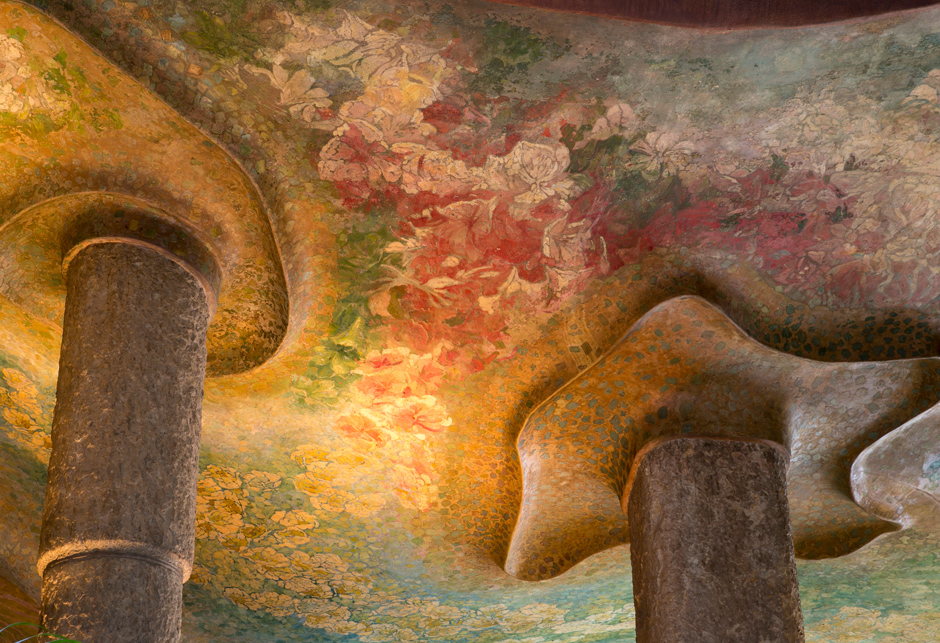
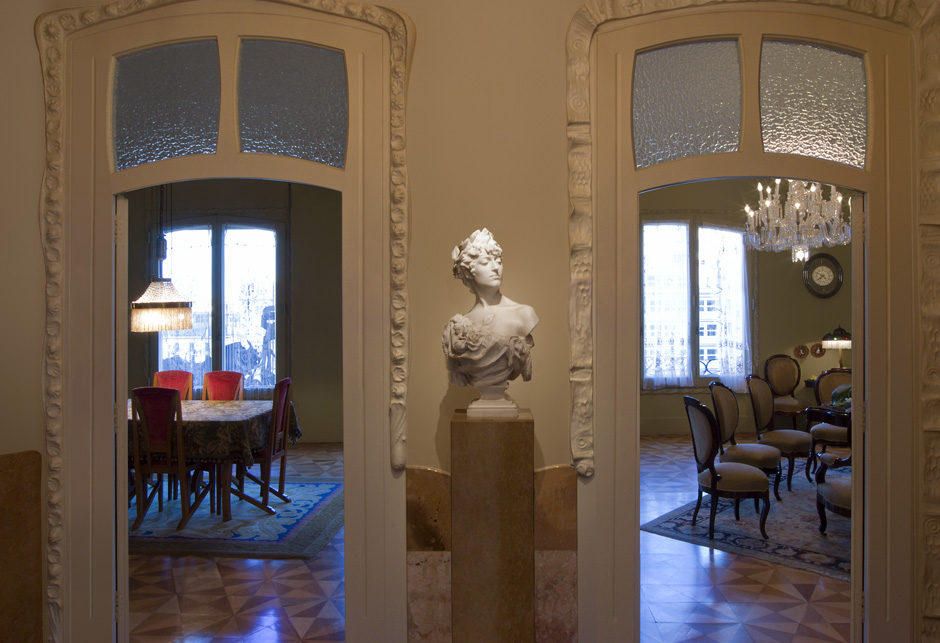


La Pedrera being built c. 1910. © Càtedra Gaudí-ETSAB-UPC. Fons Josep Bayó, constructor
A SURPRISING CHAMFERED STREET CORNER AND A SINGULAR STRUCTURE
Thanks to the building’s new conception, the impressive stone façades (which gave rise to the popular name La Pedrera - the Stone Quarry) are not structural in contrast to the façades of traditional edifices, thus providing a freedom of composition in which the windows, balconies and bay windows are set in a remarkable arrangement, causing the appearance of the façades to change throughout the course of the day as the sun moves along its path.
In an act of brilliant architectural rebellion that is very typical of his personality, Gaudí dissolved the geometry of the chamfered street corner (the type of corner which forms a characteristic trait of the Eixample district’s layout and which was established as a requisite feature by its designer Ildefons Cerdà half a century earlier) and then, not content with this transgression, he invaded the sidewalk with a hefty pillar. Likewise, he more than exceeded the building height allowed by the municipal ordinances, constructing the superb attics with some two hundred and seventy svelte parabolic and catenary arches of brick that support the spectacular roof terrace, forming an artificial landscape that is unique in all the world.

THE ROOF TERRACE, A SPACE OF UNBRIDLED CREATIVITY
The amazing roof terrace is vibrant with creative energy and unrelated to anything else to be found in the architecture of its time. With their sinuous profiles in harmony with the shape and rhythm of the main façade, the various elements of this space –staircases, ventilation towers and chimneys – clearly stand out. Adopting freely interpreted dynamic and symbolic forms, they fulfil preconceived utilitarian functions and some of them are gracefully clad with trencadís mosaic of ceramics, stone, marble and glass.
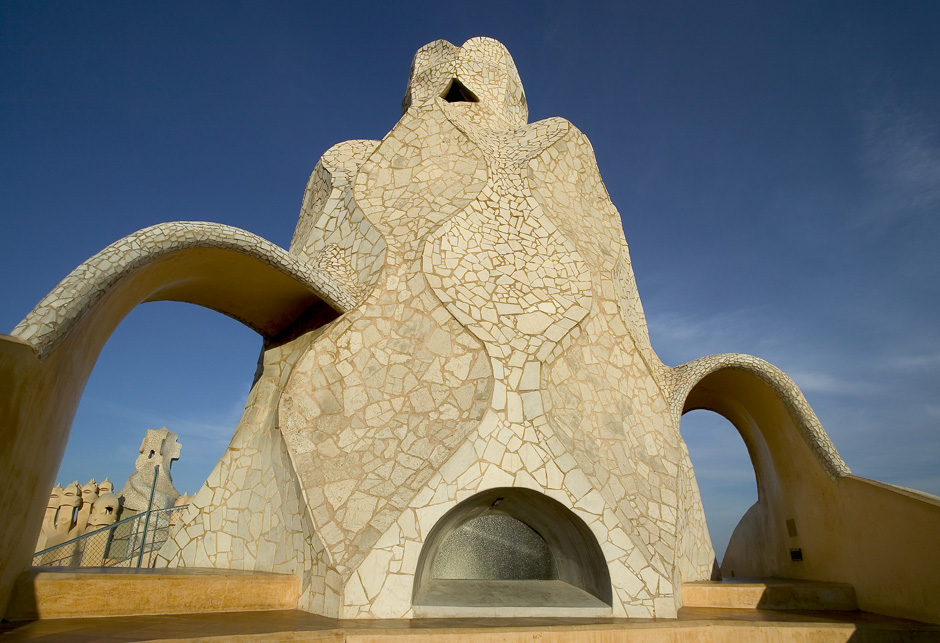
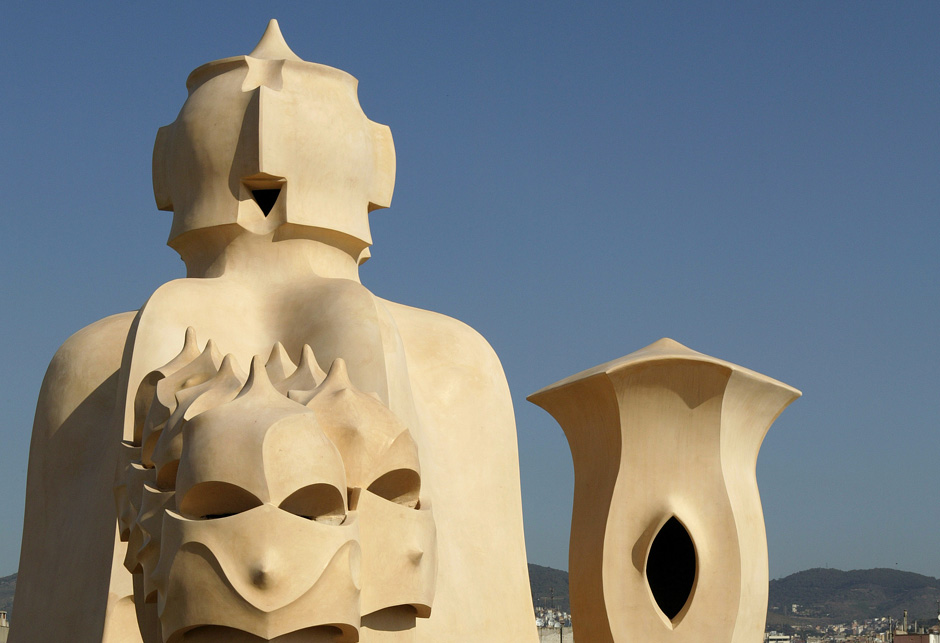
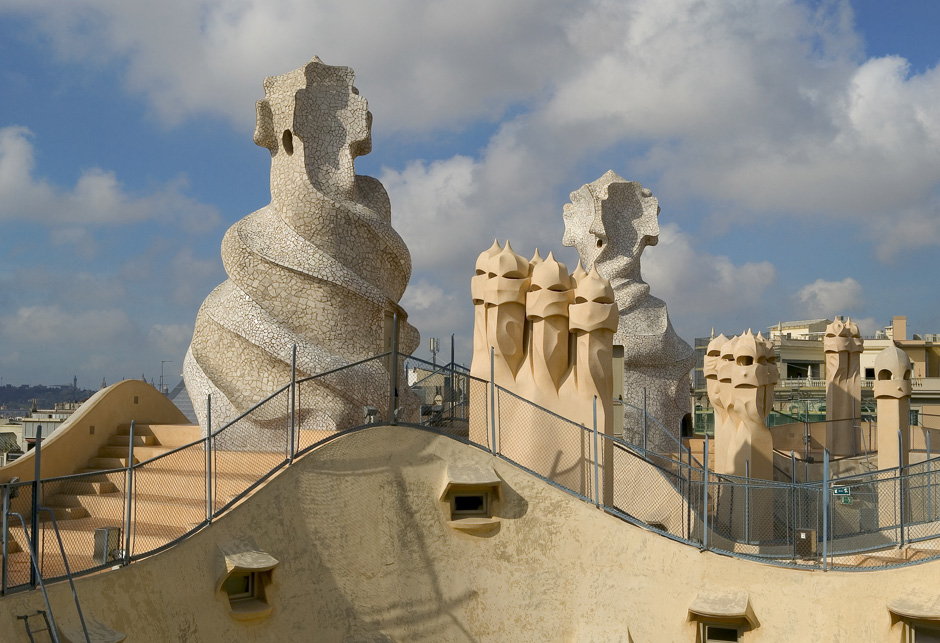
A GROUND-BREAKING ANTICIPATORY FAÇADE
The three parts forming the main façade are conceived as a formal continuum of breathtaking beauty. Gaudí designed a stone wall without any structural function that was hung from the floor assemblies, formally anticipating later Central European architectures such as those of Erich Mendelsohn and others. The rear façade, of lesser breadth for obvious reasons, is composed with the same formal freedom while using more modest and restrained building materials and techniques.
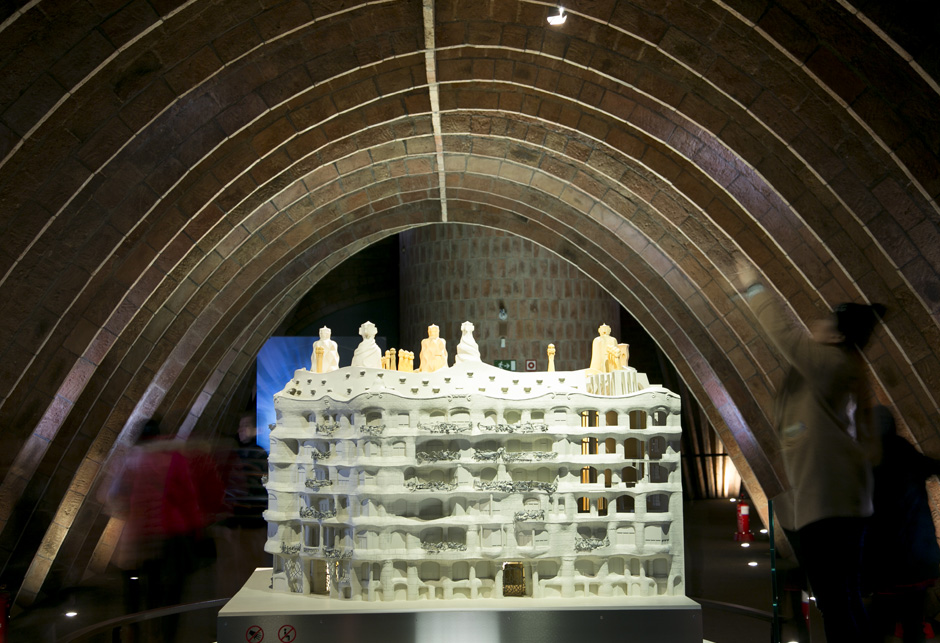
A WORK OF TOTAL ART
In this project, Gaudí had the collaboration of the young architect Josep Maria Jujol, with whom he had previously worked on the Batlló House. Delighted with his work, Gaudí subsequently asked Jujol to cooperate with him on the Park Güell and later on the reform of the Cathedral of Mallorca.
The Milà House is an example of “total architecture” in the sense that its expressive radicality is manifested in all its aspects, from its functional and constructive concepts to the execution of its every corner. It is not that an Art Nouveau language has been used to clad a conventional plan, as is the case of many celebrated Modernista structures in the city, as is shown, for instance, by the fact that the thirty-two wrought iron balconies are dealt with as sculptures and that the ceilings in the interiors of the dwellings display a never-before-seen aesthetic expressiveness.
The unique feature of this building is its spatial conception informing absolutely everything. By way of example, it may be observed that in the Milà House the traditional courtyards of the houses of the Eixample are replaced by two large round and elliptical courtyards, respectively, which form reference spaces of the structure since they lead the visitor from the street to the roof terrace while providing an abundance of light and ventilation to the building’s sixteen apartments. The façades of the courtyards are a true spectacle of shapes, light and colours. The colour factor is provided by the mural paintings which decorate them, mainly depicting floral motifs, which are also to be found on the ceilings and the side walls of the two entrance halls and of the main stairway, together with various scenes inspired by mythology.
LA PEDRERA, SATIRIZED AND ACCLAIMED
The owner of the house, Roser Segimon, never really valued or understood the architect whom her second husband, “Perico” Milà, as his friends called him, had chosen to build them the best house in the city, a commission that Gaudí carried out to perfection. The principal floor, with an extension equal to that of the whole plot, has an area equivalent to that of the four stately apartments found on each of the floors above it.
La Pedrera was misunderstood and it became the butt of jokes of the satirical press of the times, which did not appreciate its merit either. The Milà House, Gaudí’s last civil architecture project, was completed in 1912, after the architect had brought a lawsuit against the owners in connection with his fees, a lawsuit which he finally won.
Even so, the uniqueness and the artistic and heritage value of La Pedrera were clearly acknowledged with the listing of the building as an Artistic Heritage of the City of Barcelona in 1962, with its declaration as a Historical-Artistic Monument of National Interest by the Spanish Government in 1969 (a designation which is now that of Cultural Property of National Interest), and with its listing by UNESCO as a World Heritage Site in 1984 for its exceptional universal value.
The Milà House belongs today to the Catalonia-La Pedrera Foundation, which watches out for its dissemination, upkeep and preservation. It houses a cultural centre of the first order in the city of Barcelona for the outstanding importance of the activities which it holds and for the prominent public-use and museum spaces which it contains.
OPENING HOURS
From November to February, from 09:00-21:00 h
From March to October, from 09:00-23:00 h
Closed: 25 December and a week in January for maintenance (see dates www.lapedrera.com)
HOW TO GET THERE
Bus: 7, 16, 17, 22, 24, V17
Metro: L3 / L5 - Diagonal station
FGC trains: Provença - La Pedrera station
RENFE trains: Passeig de Gràcia station
TOURISTIC TRANSPORTS
Bus Turístic: Blue Route. Tibidabo
Barcelona City Tour: East Route. Tibidabo